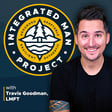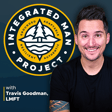
Understanding Attachment Theory: Types, Impact, and Healing Strategies
Hey everybody - Travis here - today I am excited to dive into a foundational concept in psychology that's pivotal for personal growth and relationships - Attachment Theory! While we don't have a guest on today's episode, I will guide you through this enriching topic.
In this episode, we're going to explore some fundamental areas:
1. **Origins and Founders of Attachment Theory**: We delve into the mid-20th century work of British psychologist John Bowlby, often regarded as the father of attachment theory. Bowlby focused on the bond between the child and caregiver and how these early relationships impact emotional and psychological development throughout one's life. Plus, we'll discuss how Mary Ainsworth expanded on Bowlby's work with her famous Strange Situation experiment, which classified different attachment styles.
2. **Types of Attachment Styles**: Understanding the four primary attachment styles - Secure, Anxious-Preoccupied, Dismissive-Avoidant, and Fearful-Avoidant (Disorganized) - and how each style manifests in relationships and personal behavior. We'll also touch on how these styles influence conflict resolution and mental well-being.
3. **Impact on Relationships and Mental Health**: How your attachment style affects your interactions, conflict management, and overall mental health. Securely attached individuals tend to have better stress management and healthier conflict resolution, while those with insecure attachment styles may struggle more in relationships and mental health scenarios.
Challenge Question: Reflecting on your personal relationships, can you identify any patterns that point to a specific attachment style you may have? How do these patterns influence your interactions and conflict resolutions with loved ones?
So grab a notebook, because you're going to want to take notes as we navigate this complex yet crucial aspect of personal development. And remember, understanding your attachment style can be the first step towards healing, growth, and more fulfilling relationships.
JOIN THE MAILING LIST & GET INVOLVED!
WATCH ON YOUTUBE:
Connect and Support Travis:
YouTube: Travis Goodman
Instagram: @integratedmanproject
Check out the Website: TBD





